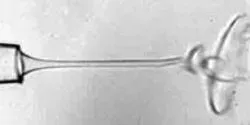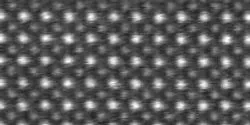Product Resource: Industry News

Industrial wet spinning processes produce fibers from polymers and other materials by using tiny needles to eject continuous jets of liquid precursors. The electrically charged liquids ejected from the needles normally exhibit a chaotic “whipping” structure as they enter a secondary liquid that surrounds the microscopic jets.

It may look like fresh blood and flow like fresh blood, but the longer blood is stored, the less it can carry oxygen into the tiny microcapillaries of the body, says a new study from University of Illinois researchers.

Research from University of Leicester sniffs-out smell of disease in feces.

Rigaku's Handheld Raman Analyzer Wins IBO Award for Portable Analytical Instrument Industrial Design
Rigaku Raman Technologies, a leading pioneer of handheld and portable Raman spectrometers, is delighted to announce that its handheld Raman analyzer, Progeny™ (www.rigakuprogeny.com) has received the Bronze Award for the Portable Analytical Instrument Industrial Design category in the 2014 Instrument Business Outlook (IBO) Design Awards.

In July 1978, Peter Buseck of Arizona State University, together with two postdoctoral researchers (also then at ASU), published a paper on a new technique for high-resolution imaging of crystal structures using transmission electron microscopes. Recently, the scientific journal Nature has hailed that paper as a milestone in the science of crystallography. At the same time, Nature also cited three other milestone crystallography papers.

A research group led by Professor Hiroyuki Noji, Department of Applied Chemistry, Graduate School of Engineering, University of Tokyo, successfully observed and touched the rotational motion of a 1-nm synthetic molecular machine through the application of a single-molecule capturing and manipulation technique using optical microscopy and a bead probe (single-molecule motion capturing), which allows visualization of molecular mechanical motion.

Scientists at the Houston Methodist Research Institute have figured out how to pick up and transfer single cells using a pipette–a common laboratory tool that's been tweaked slightly. They describe this engineering feat and preliminary test results in a recent issue of the Journal of the American Chemical Society.











